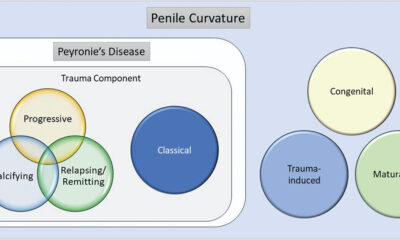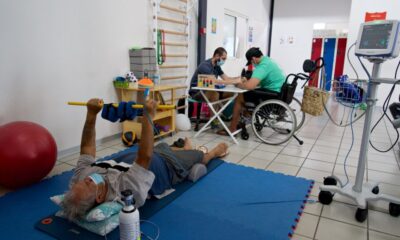Health
New gene editing technique reverses heart disease in mice

holder of anatomical heart model
New gene editing techniques, such as adenine base editing and prime editing, create new possibilities for the treatment of dilated cardiomyopathy, a heart disease that affects about 1 in 250 people worldwide. It is also a leading cause of heart failure and sudden cardiac death. In a recent studyadvanced techniques were used to fix mutations in the RNA-binding motif protein 20 (RBM20) gene, a common factor in familial dilated cardiomyopathy. The study showed promising results in improving heart function and extending lifespan in mice.
Gene therapy for dilated cardiomyopathy
The study aimed to assess the effectiveness of adenine base editing and prime editing in correcting mutations and their impact on cardiac function. Think of it as using a molecular eraser and a pencil to correct typos in our DNA.
The research team used advanced forms of CRISPR gene editing, specifically adenine base editing, to target and correct a specific mutation in the RNA-binding motif protein 20 gene, known to cause dilated cardiomyopathy in humans. They delivered the gene editing components systemically using a harmless virus, restoring normal heart function in mice with the disease. The first method showed an impressive 92% success rate. Although the second method was less successful at 40%, it is still promising. These experiments were performed on human cells and mice in a laboratory. The mice with serious heart problems improved significantly after the genetic corrections.
The journey from the laboratory to clinical use in medical research is long and complex. This study is a promising first step, but there are still many obstacles before these techniques can be used in humans. It is important to balance hope and reality in medical research.
Limitations and challenges
The gene editing research for dilated cardiomyopathy is promising, but it is essential to recognize its limitations. The study focused on mice with severe symptoms, which may not be fully representative of the range of cases of dilated cardiomyopathy in humans.
An important consideration is the potential for off-target effects in gene editing. Although the study reported high accuracy in targeting specific mutations, the long-term consequences of such genetic modifications remain uncertain. The complexity of gene interactions and the potential for unintended changes in other parts of the genome require extensive research before these techniques can be considered safe for human application.
Furthermore, while the study’s success in mouse models is encouraging, it does not guarantee comparable results in humans. Translating gene therapy from animal models to human patients often faces significant challenges, including differences in genetic backgrounds, immune responses, and the complexity of human cardiac physiology. These factors underscore the need for extensive clinical trials and long-term follow-up studies before gene editing can be considered a viable treatment option for patients with dilated cardiomyopathy.
Implications and significance for the future
The significance of this research extends far beyond its immediate findings. It demonstrates the enormous potential of precise genomic editing techniques in the treatment of complex genetic disorders that affect vital organs. By successfully correcting pathogenic mutations, the research opens new avenues for developing targeted treatments for several genetic disorders, including Duchenne muscular dystrophy and progeria.
A key finding in this study is the researchers’ ability to safely and effectively deliver gene editing components throughout the body, achieving targeted correction in heart tissue. This is further validated by normalizing gene expression profiles in the heart after treatment. As this technique moves closer to potential human trials, it offers a more targeted and potentially curative approach than current therapies.
The continued advancement of gene editing technologies, such as the development of more efficient Cas9 variants, promises to improve the efficiency and precision of these therapies.
A path forward
The journey to clinical application of gene therapy for dilated cardiomyopathy is challenging. Still, the potential benefits offer a promising glimpse of a future where genetic conditions can be corrected at their cause, providing a permanent solution rather than temporary relief.
The advances in gene editing for dilated cardiomyopathy are a significant advance in medical science. By using adenine-based editing and prime editing, researchers are paving the way for new treatments that could significantly improve the quality of life for individuals affected by genetic heart disease. As these technologies continue to develop, we can be hopeful of a future where genetic disorders are no longer a life sentence.
–
This story is part of a series about current advances in regenerative medicine. In 1999, I defined regenerative medicine as the set of interventions that restore tissues and organs damaged by disease, injured by trauma, or worn down by time to normal function. I include a full spectrum of chemical, gene and protein-based medicines, cell-based therapies and biomechanical interventions that achieve that goal.
In this sub-series we focus specifically on gene therapies. We explore current treatments and explore the advances that are poised to transform healthcare. Each article in this collection delves into a different aspect of gene therapy’s role within the larger story of regenerative medicine.
To learn more about regenerative medicine, read more stories at www.williamhaseltine.com













